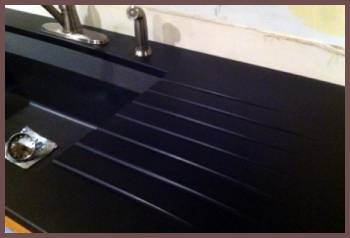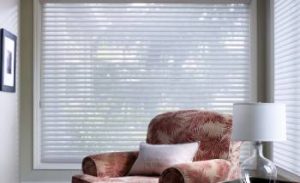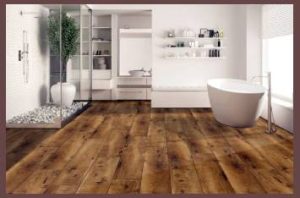Richlite countertops have been making waves in the world of home design and renovations. This eco-friendly, versatile, and durable material has been catching the eye of homeowners and designers alike. But is it the right choice for your home?
In this comprehensive review, we’ll delve into the pros and cons of Richlite countertops, offering you an analytical perspective to make an informed decision.
The Story Behind Richlite Countertops
Richlite is a solid surface material made from paper and resin, which is then compressed under high heat and pressure. This unique process gives Richlite countertops their distinct appearance and resilience. The material was initially developed in the 1940s for use in the aerospace and marine industries but has since transitioned into the world of home design.
With its environmentally friendly production process and recyclable materials, it’s no wonder that Richlite countertops have become a popular choice for those looking to reduce their carbon footprint.
Pros of Richlite Countertops

- Eco-friendly
One of the main selling points of Richlite countertops is their eco-friendliness. The paper used in the manufacturing process is sourced from responsibly managed forests, and the material is free of VOCs (volatile organic compounds), making it an excellent choice for those looking to minimize their environmental impact. Plus, Richlite countertops are recyclable, further adding to their green credentials.
- Durable and Low Maintenance
Richlite countertops are incredibly durable, thanks to the high-pressure manufacturing process. They’re resistant to scratches, stains, and heat, making them an ideal choice for busy kitchens. Additionally, Richlite is non-porous, so it won’t harbor bacteria or require sealing like some other countertop materials. This low maintenance material only needs a simple wipe down with soap and water to keep it looking its best.
- Customizable
Another advantage of Richlite countertops is their versatility. They can be customized to fit any kitchen design, with a wide variety of colors and finishes available. From the classic black Richlite to more modern, vibrant hues, there’s a style to suit every taste. Additionally, the material can be easily cut and shaped to fit your specific design requirements.
- Warm and Inviting Aesthetic
Richlite countertops have a warm, inviting appearance that many homeowners appreciate. The material’s natural, organic look adds a touch of character to any kitchen, creating a cozy, welcoming atmosphere.
Cons of Richlite Countertops

- Price
One of the primary drawbacks of Richlite countertops is their price. While not as expensive as some high-end materials like quartz or granite, Richlite countertops can still be quite costly. However, many homeowners find the material’s durability, low maintenance, and eco-friendly attributes justify the investment.
- Potential for Scratches and Dents
While Richlite countertops are resistant to scratches and dents, they are not entirely immune. Heavy, sharp objects can still cause damage if dropped or dragged across the surface. However, with proper care and the use of cutting boards, the risk of damage can be minimized.
- Limited Availability
As a niche, eco-friendly material, Richlite countertops may not be as readily available as more traditional options like granite or laminate. This can make sourcing and installation a bit more challenging, particularly if you live in a more rural area.
Read More: About Pure Surfaces Quartz
Tips for Choosing and Installing Richlite Countertops
Now that we’ve covered the pros and cons of Richlite countertops, let’s explore some tips for choosing and installing this eco-friendly material in your home.
- Consider Your Kitchen Style
Before selecting a Richlite countertop, consider your kitchen’s overall design and aesthetic. Richlite is versatile and can complement various styles, from modern and minimalist to rustic and traditional. Choose a color and finish that will seamlessly blend with your existing décor and enhance your kitchen’s visual appeal.
- Think About Functionality
When selecting a Richlite countertop, consider how you use your kitchen. Do you frequently cook and entertain? Are you concerned about spills, stains, and scratches? Richlite’s durability and low maintenance make it an excellent choice for busy households, but remember to use cutting boards and trivets to protect the surface and maintain its appearance.
- Consult with Professionals
Working with a professional kitchen designer or contractor can help ensure a smooth and successful Richlite countertop installation. They can provide expert advice on selecting the right color, finish, and edge profile for your space, as well as guide you through the installation process.
- Plan Your Budget
As mentioned earlier, Richlite countertops can be more expensive than some other materials. Be sure to factor in the cost of the material, as well as any labor and installation fees, when planning your kitchen renovation budget.
- Be Prepared for a Longer Lead Time
Since Richlite is a niche, eco-friendly material, it may not be as readily available as more traditional countertop options. Be prepared for a longer lead time, as sourcing and installation may take a bit more time than with other materials.
Read More: About Mont Quartz
Frequently Asked Questions (FAQs)
Maintaining Richlite countertops is simple. All you need to do is wipe them down with a damp cloth and mild soap. Avoid using abrasive cleaners or scouring pads, as these can damage the surface.
For stubborn stains, a mixture of baking soda and water can be used to gently scrub the area.
Richlite is an incredibly durable material, thanks to its high-pressure manufacturing process. It’s resistant to scratches, stains, and heat, making it an ideal choice for busy kitchens.
However, it’s essential to use cutting boards and avoid dragging heavy, sharp objects across the surface to minimize the risk of damage.
There isn’t a single “toughest” kitchen countertop, as different materials offer various levels of durability and resistance. Some of the most durable countertop materials include quartz, granite, and Richlite.
Each has its pros and cons, so it’s essential to consider your specific needs and preferences when choosing a countertop material.
Both Richlite and PaperStone are eco-friendly, paper-based countertop materials. They share many similarities, including durability, heat resistance, and low maintenance. However, there are a few differences between the two. Richlite is made from layers of paper and resin, while PaperStone uses a proprietary, petroleum-free resin.
Additionally, Richlite offers a wider variety of colors and finishes compared to PaperStone.
Yes, you can place a hot pan on Richlite countertops without causing damage. The material is heat-resistant up to 350°F (176°C), making it suitable for typical kitchen use.
However, it’s always a good idea to use trivets or heat-resistant mats to protect your countertops, regardless of the material.
The best finish for Richlite countertops depends on your personal preferences and the desired aesthetic for your kitchen. Richlite is available in a range of colors and finishes, from matte to glossy. Matte finishes offer a more natural, subdued look, while glossy finishes provide a sleek, modern appearance.
When choosing a finish, consider your kitchen’s overall design and the level of maintenance you’re willing to commit to, as some finishes may require more frequent cleaning to maintain their appearance.
Final Thoughts on Richlite Countertops
Richlite countertops offer an attractive combination of eco-friendliness, durability, and versatility, making them an excellent choice for homeowners looking to update their kitchen with a sustainable and stylish material. While they may be pricier than some alternatives and potentially more challenging to source, the benefits of Richlite countertops are undeniable.
By carefully considering your kitchen’s style and functionality, working with professionals, and planning your budget, you can successfully incorporate this innovative material into your home.



